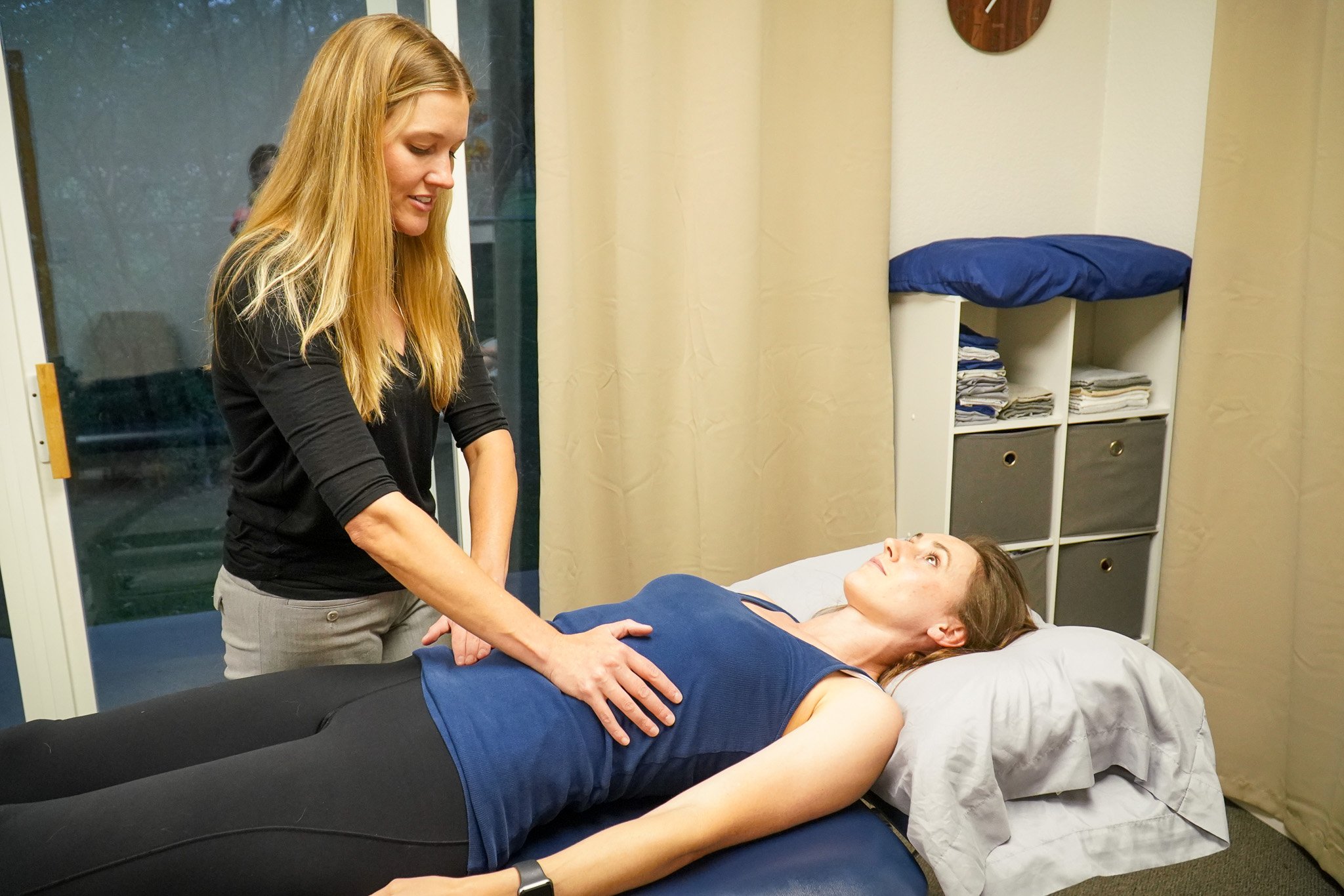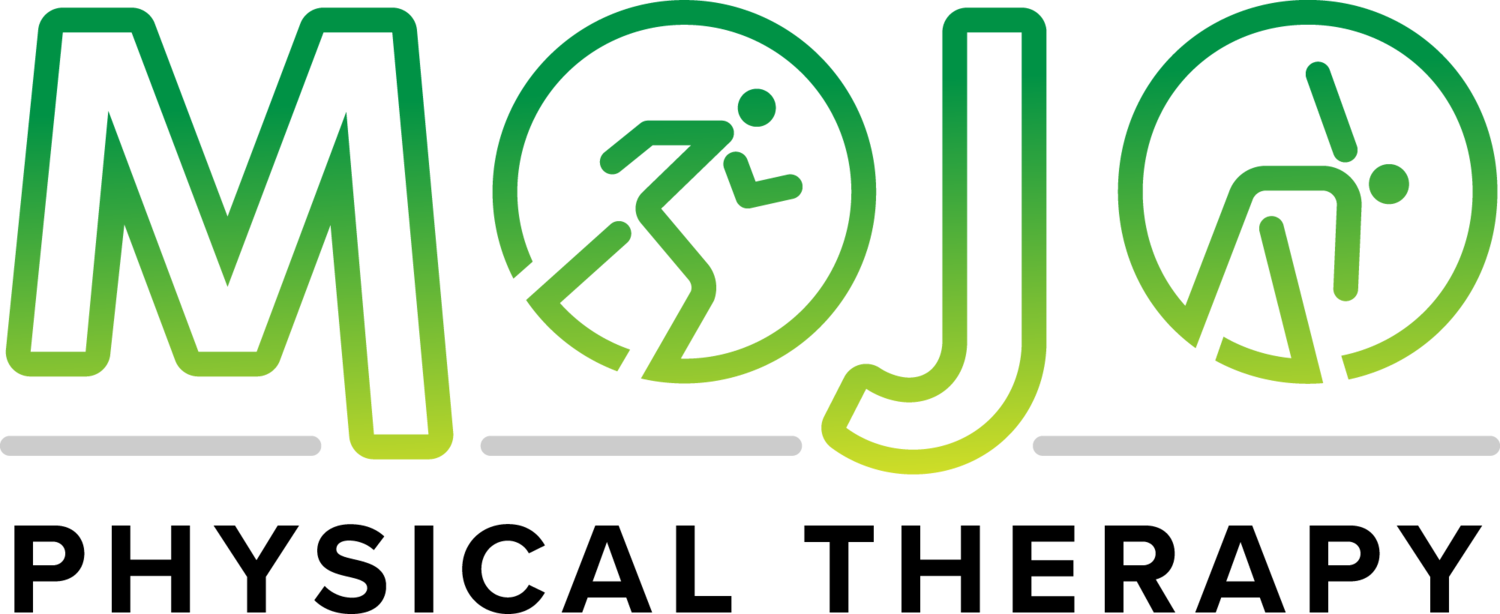
The Mojo Way - Empowering Your Health
1 -hour with a Doctor of Physical Therapy, All About YOU.
Get your Mojo back!
Serving Boulder County for 7 years and counting!

What Sets us Apart:
1-on-1 Attention from a DPT
Your PT’s Direct Email
Functional Gym Space
Independent Treatment Rooms
Sport Specific Training
Dedicated Follow Up E-mails
1-Hour Appointments
Sport Specific Testing
Evidence Based Treatment
A Caring Team of Providers
Customized Home Plans
Time to ask questions
What We Treat
-
Urinary Incontinence: Stress and Urge
Postpartum Recovery
Pelvic Pain
Pelvic Organ Prolapse
Constipation
-
Muscle or ligament strain
Herniated or slipped discs
Degenerative disc disease
Spinal stenosis (narrowing of the spinal canal)
Osteoarthritis in the spine
Scoliosis or other spinal deformities
Sciatica (nerve compression causing leg pain)
Spondylolisthesis (vertebra slipping out of place)
Compression fractures (often from osteoporosis)
Poor posture or prolonged sitting
Overuse or repetitive strain injuries
Heavy lifting or improper lifting techniques
Traumatic injury (e.g., car accidents, falls)
Fibromyalgia or chronic pain syndromes
-
Rotator cuff injuries (tears, tendinitis, bursitis)
Shoulder impingement
Frozen shoulder (adhesive capsulitis)
Shoulder dislocation or instability
Labral tear (SLAP tear or Bankart lesion)
Osteoarthritis of the shoulder
Shoulder fractures (clavicle, humerus, or scapula)
Biceps tendonitis or tendon rupture
Shoulder separation (AC joint injury)
Referred pain from neck or upper back (cervical spine issues)
Nerve compression (brachial plexus injury or pinched nerve)
Overuse or repetitive motion injuries
Poor posture or muscle imbalances
Rheumatoid arthritis or other inflammatory conditions
-
Ligament injuries (ACL, MCL, PCL, LCL tears or sprains)
Meniscus tear
Patellar tendinitis (Jumper’s knee)
Osteoarthritis in the knee
Bursitis (inflammation of the bursae)
IT band syndrome
Patellofemoral pain syndrome (runner’s knee)
Knee dislocation or instability
Fractures (patella or other knee bones)
Cartilage injuries (chondromalacia)
Osgood-Schlatter disease
Baker’s cyst
Overuse or repetitive strain injuries
Poor alignment or muscle imbalances
-
Hip replacement (Total Hip Arthroplasty)
Knee replacement (Total Knee Arthroplasty or Partial Knee Replacement)
Shoulder replacement (Total Shoulder Arthroplasty or Reverse Shoulder Replacement)
Ankle replacement (Total Ankle Arthroplasty)
CMC joint replacement (often due to arthritis at the base of the thumb)
-
Golfer’s Elbow (Medial Epicondylitis)
Tennis Elbow (Lateral Epicondylitis)
Elbow Fracture
Ulnar Collateral Ligament (UCL) Injury
Olecranon Bursitis
Elbow Dislocation
Biceps Tendon Rupture
Cubital Tunnel Syndrome
Radial Tunnel Syndrome
Wrist Sprain
Carpal Tunnel Syndrome
Wrist Fracture (Distal Radius Fracture)
Scaphoid Fracture
De Quervain's Tenosynovitis
Triangular Fibrocartilage Complex (TFCC) Tear
Tendonitis (Wrist Flexor/Extensor Tendonitis)
Trigger Finger
Dupuytren’s Contracture
Boxer's Fracture
Finger Dislocation
Skier’s Thumb (UCL Injury of the Thumb)
Boutonnière Deformity
Flexor Tendon Injury
Extensor Tendon Injury
Metacarpal Fracture
-
Muscle strain or tension (from poor posture, prolonged sitting, or sleeping position)
Cervical disc herniation
Cervical spondylosis
Pinched nerve (cervical radiculopathy)
Whiplash or neck injury (e.g., car accidents)
Degenerative disc disease
Osteoarthritis in the neck
Cervical spinal stenosis
Poor ergonomics (workstation setup)
Referred pain from shoulder or upper back injuries
Fibromyalgia or other chronic pain conditions
Tension headaches (caused by neck muscle strain or stress)
Cervicogenic headaches (headaches originating from neck problems)
Migraines
Cluster headaches
Temporomandibular joint (TMJ) disorders
-
Plantar fasciitis
Metatarsalgia (pain in the ball of the foot)
Morton’s neuroma (nerve pain between the toes)
Bunions
Flat feet or fallen arches
Tarsal tunnel syndrome (nerve compression)
Arthritis (osteoarthritis or rheumatoid arthritis)
Tendonitis
Turf toe (sprain of the big toe joint)
Ankle sprains (over stretching or tearing of ligaments)
Achilles tendonitis or rupture
Ankle fractures
Osteoarthritis in the ankle joint
Ankle instability (recurrent ankle sprains)
Posterior tibial tendon dysfunction
Peroneal tendonitis (inflammation of the tendons on the outer ankle)
Bursitis (inflammation of the bursae around the ankle joint)
Tarsal tunnel syndrome
-
Osteoarthritis (degeneration of the hip joint)
Hip bursitis (inflammation of the bursae)
Hip labral tear (damage to the cartilage in the hip socket)
Hip fractures (often due to falls or trauma)
Tendonitis
Hip impingement (femoral acetabular impingement, FAI)
Muscle strains
Piriformis syndrome (compression of the sciatic nerve)
Snapping hip syndrome (tendon snapping over bones)
Trochanteric pain syndrome (lateral hip pain)
Sciatica (pain radiating from lower back to the hip)
Rheumatoid arthritis or other inflammatory conditions
Overuse or repetitive strain injuries
Post Op
-
Vertigo (often due to inner ear issues like benign paroxysmal positional vertigo - BPPV)
Concussion or head trauma
Balance Training
-
Rotator Cuff Repair
Shoulder Labrum Repair
Hip Labrum Repair
ACL reconstruction
MPFL reconstruction
Meniscus Repair
Achilles Tendon Repair
Cartilage Restoration Procedures
Spinal Fusion
Lumbar or Cervical Discectomy
Laminectomy
Ankle Stabilization
Bunions or hammertoe surgery
Arthroscopic Procedures
Recovery from abdominal or thoracic surgeries (e.g. hernia repair)
-
Dizziness
Headache
Vision Changes
Eye Strain
Trouble Concentrating
Light and/or noise sensitivity
Balance issues
Gaze Stabilization
Neck Pain
Irritability
Trouble Sleeping
The Mojo Plan of Care
INITIAL EVALUATION
A Doctor of Physical Therapy will provide a thorough evaluation and together create a plan of care to reach your goals. This will include movement analysis, strength testing, joint mobility testing and more based on your needs.
You will be provided Treatment at your first appointment.
TREATMENT
This is the fun part! Each appointment, expect a re-assessment to see how you did from last appointment and make sure you’re on track for a full recovery. Appointments will then include manual interventions, exercise prescription and home exercises.
You will receive an email after each appointment with directions on what you are to work on between appointments.
BACK IN ACTION
Time to live your life and do everything you love! With a new knowledge of your body, you will have the tools to stay strong, pain free and healthy.
You will have access to all past exercises and instructions to make sure you know exactly what to do!
Your Goals Are Ours!
Let’s get you feeling BETTER, STRONGER and doing what you LOVE.

Our Services
CLICK ON ANY SERVICE BELOW TO LEARN MORE!
TRIGGER POINT DRY NEEDLING | CUPPING | INSTRUMENT ASSISTED SOFT TISSUE MOBILIZATION
MANUAL THERAPY | EXERCISE PRESCRIPTION | NEUROMUSCULAR RE-EDUCATION | GAIT TRAINING
FUNCTIONAL MOVEMENT ANALYSIS | CLIENT EDUCATION | WOMEN'S HEALTH PT | VISCERAL MANIPULATION
VESTIBULAR THERAPY | BALANCE TRAINING | POST CONCUSSION REHABILITATION
Don’t Wait To Become A Better, More Active Self. Talk with a Mojo Team Member today.

By Appointment Only:
Monday–Thursday: 7:30am–5:30pm
Friday: 7:00am-2:30pm
Location:
6666 Gunpark Dr Ste 102
Boulder, CO 80301
